
Marischal College is a large granite building on Broad Street in the centre of Aberdeen in north-east Scotland, and since 2011 has acted as the headquarters of Aberdeen City Council. However, the building was constructed for and is on long-term lease from the University of Aberdeen, which still uses parts of the building to store its museum collections. Today, it provides corporate office space and public access to council services, adjacent to the Town House, the city's historic seat of local government. Many Aberdonians consider Marischal College to be an icon of the "Granite City" and to symbolise the zenith of Aberdeen's granite-working industry.

Pencaitland is a village in East Lothian, Scotland, about 12 miles south-east of Edinburgh, 5 mi (8 km) south-west of Haddington, and 1 mi (2 km) east of Ormiston.

Archibald Simpson was a Scottish architect, who along with his rival John Smith, is regarded as having fashioned the character of Aberdeen as "The Granite City".

Queen's Cross Church is a congregation of the Church of Scotland. It is located at the intersection of Carden Place and Albyn Place, at Queen's Cross in the heart of Aberdeen's west end business community. It is a short walk from the main shopping areas of the city and several main hotels. The church was designated as a Category B listed building in 1967 and was upgraded to Category A in 1984.
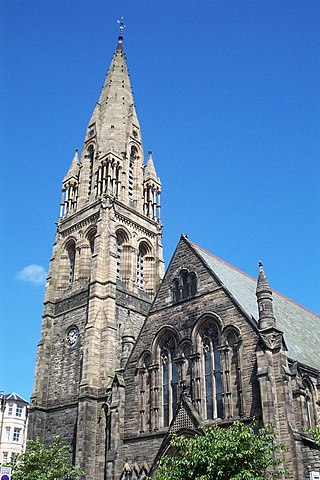
Mayfield Salisbury Church, formerly Mayfield North Church and also informally known as Mayfield Church, is a parish church of the Church of Scotland. It is located in the Newington district of Edinburgh, approximately 1.5 miles (2.4 km) south of the city centre. The building was designed by Hippolyte Blanc, with construction taking place between 1875 and 1879. Extensive renovations were carried out in 1969 following a major fire which destroyed most of the roof. The building is noted for the range and quality of its stained glass. The present congregation is the product of several mergers, most recently of Mayfield Church with Salisbury Church in 1993.

Rubislaw Quarry is a quarry situated at the Hill of Rubislaw in the west end of the city of Aberdeen, Scotland.
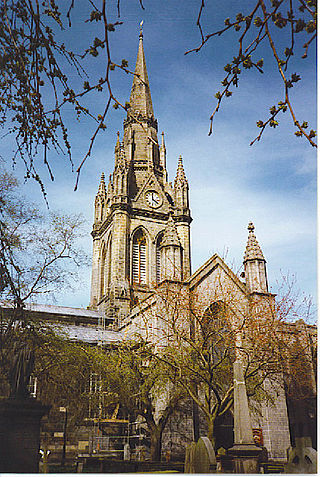
The Kirk of St Nicholas is a historic church located in the city centre of Aberdeen, Scotland. Up until the dissolution of the congregation on 31 December 2020, it was known as the "Kirk of St Nicholas Uniting". It is also known as "The Mither Kirk" of the city. As of 1 January 2021, the building falls under the care and maintenance of the General Trustees of the Church of Scotland.

Queen's Cross is an area in the West End of Aberdeen, Scotland. It is located just west of the main thoroughfare of Union Street and about 1.5 miles (2.4 km) from the geographical town centre at Mercat Cross.
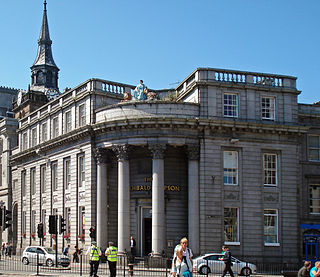
The architecture of Aberdeen, Scotland, is known for the use of granite as the principal construction material. The stone, which has been quarried in and around the city, has given Aberdeen the epithet The Granite City, or more romantically, and less commonly used, the Silver City, after the mica in the stone which sparkles in the sun.
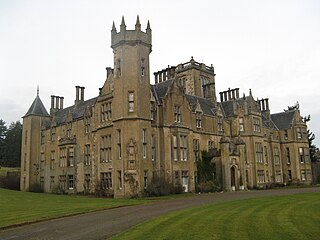
John Smith was a Scottish architect. His career started in 1805 and he was appointed as the official city architect of Aberdeen in 1807, the first person to hold this post. Together with Archibald Simpson, he contributed significantly to the architecture of Aberdeen, and many of the granite buildings that gave the city the nickname "The Granite City" or also "The Silver City" are attributed to them.

Holburn West Church was a congregation of the Church of Scotland. The Church united with the congregations of Midstocket Church, Queen's Cross Church, Aberdeen and Rubislaw Church to form Fountainhall Church in June 2023.
Woodside is an area of Aberdeen. It came into existence as a quoad sacra parish within the parish of Old Machar in 1834, under an act of The General Assembly of the Church of Scotland of 31 May 1834, and was named for the principal residence of the area, Woodside House.

A crown steeple, or crown spire, is a traditional form of church steeple in which curved stone flying buttresses form the open shape of a rounded crown. Crown spires first appeared in the Late Gothic church architecture in England and Scotland during the Late Middle Ages, continued to be built through the 17th century and reappeared in the late 18th century as part of the Gothic Revival.
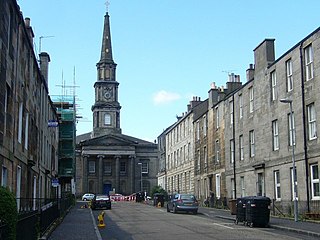
North Leith Parish Church is a congregation of the Church of Scotland, within the Presbytery of Edinburgh. It serves part of Leith, formerly an independent burgh and since 1920 a part of the city of Edinburgh, Scotland.

Udny Parish Church, now in private ownership, was a congregation of the Church of Scotland at Udny Green, Aberdeenshire in the north-east of Scotland, some 15 miles north of Aberdeen. Formerly known as Christ's Kirk, it was designed by the City of Aberdeen architect John Smith in 1821. Sited on the north edge of the village green, it is within the ancient Udny Parish and the Formartine committee area. It is a Category B listed building.
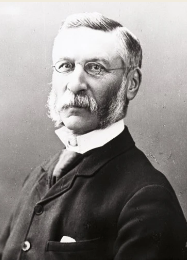
James Matthews was a prominent 19th-century architect in northern Scotland who also served as Lord Provost of Aberdeen from 1883 to 1886 during which time he enacted an important city improvement plan. His work as an architect is largely in the Scots baronial style.

The Triple Kirks in Aberdeen, Scotland were built at the time of the Disruption of 1843 when the Free Church of Scotland split from the Church of Scotland. The three churches were all part of a single building with a tall spire but they housed separate congregations. The East Free Kirk was completed 1843 followed by the West Free Kirk and South Free Kirk early the following year. From about 1966 the building progressively fell into disuse and became mostly ruinous but with the spire remaining.
Telford Parliamentary church also known as the Telford Kirks are a series of presbyterian churches in Scotland built with money voted from the parliament of the United Kingdom as a result of the Church of Scotland Act 1824 for a grant of £50,000, designed by the surveyor William Thomson and built by the Scottish stonemason and architect Thomas Telford. In total, 32 churches were built and many are still in use today. Others have been abandoned, e.g. at Stoer, while others were destroyed and rebuilt, e.g. at Tobermory, while others have been converted to dwellings.

Robert Gordon Wilson (1844–1931) was a 19th/20th century Scottish architect based in Aberdeen. He was from a strong United Presbyterian background and specialised in churches for the United Presbyterian Church and Free Church of Scotland.



















